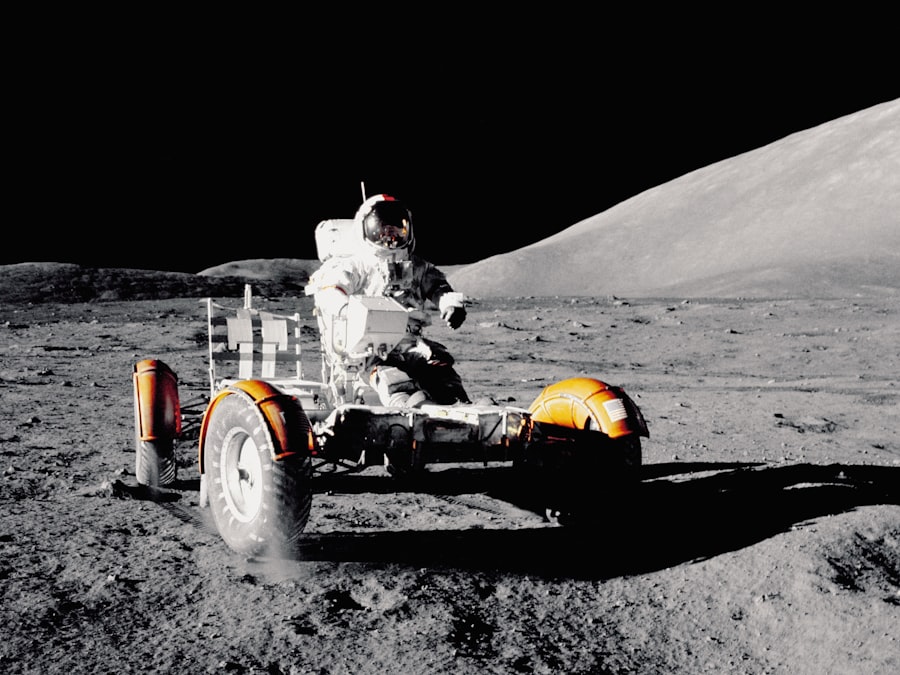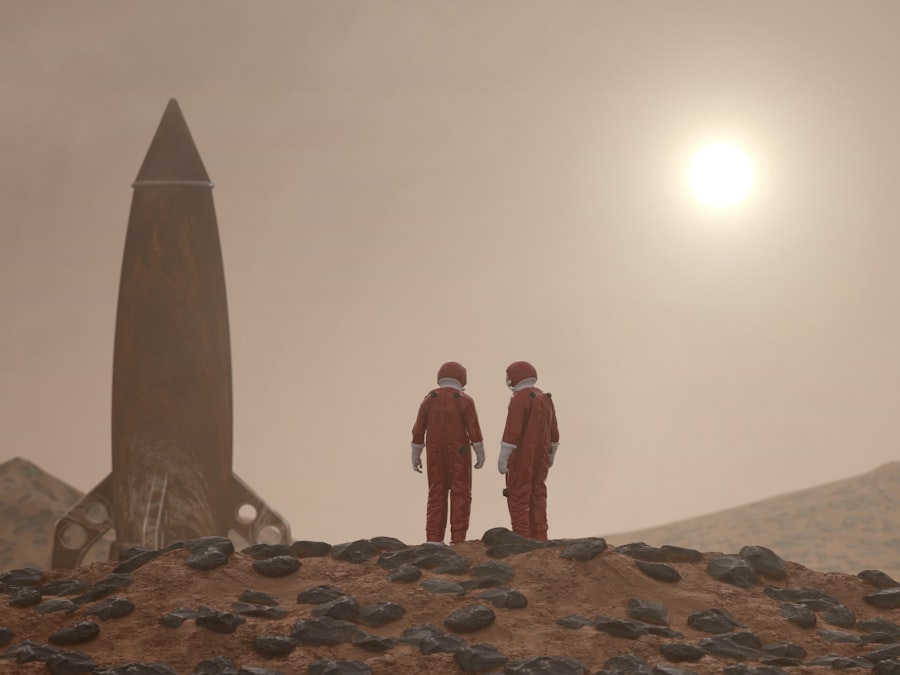The journey to becoming an astronaut is a highly selective and competitive process that begins long before candidates ever set foot in a spacecraft. NASA, along with other space agencies around the world, has established rigorous criteria for selecting individuals who will venture into the cosmos. Candidates typically need a strong educational background in science, technology, engineering, or mathematics (STEM), often holding advanced degrees such as a master’s or doctorate.
In addition to academic qualifications, candidates are expected to have substantial professional experience, often requiring at least three years of relevant work experience or at least 1,000 hours of pilot-in-command time in jet aircraft for those pursuing a role as a pilot astronaut. The selection process itself is multifaceted and can take several months to complete. It begins with an extensive application that includes personal essays, recommendations, and detailed accounts of professional experiences.
Once the initial applications are reviewed, a select group of candidates is invited for interviews, psychological evaluations, and medical examinations. These assessments are designed to evaluate not only the candidates’ technical skills and knowledge but also their ability to work in high-pressure environments and function effectively as part of a team. The final selection is often a blend of technical expertise, physical fitness, psychological resilience, and interpersonal skills, culminating in the announcement of the chosen few who will embark on the next phase of their extraordinary journey.
Key Takeaways
- The selection process for becoming an astronaut is extremely competitive and rigorous, with candidates needing to possess a strong educational background, physical fitness, and relevant experience.
- Astronauts undergo intense training to prepare for the challenges of space, including simulations of weightlessness, survival training, and learning to operate spacecraft and space station systems.
- Launch day is filled with excitement and anticipation as astronauts prepare to embark on their mission into space, with the thrill of experiencing the incredible force of a rocket launch.
- Life in space requires astronauts to adapt to the unknown, including living in a confined space, managing daily tasks in microgravity, and coping with the psychological effects of isolation.
- Conducting experiments in zero gravity allows astronauts to contribute to scientific research in a unique environment, providing valuable insights that can benefit life on Earth.
- Spacewalks are the ultimate adventure for astronauts, involving the exhilarating experience of floating in the vacuum of space while performing crucial maintenance and repairs on the spacecraft or space station.
- Returning to Earth presents challenges as astronauts readjust to gravity, including physical changes such as muscle atrophy and bone density loss, as well as the psychological impact of reintegration into Earth’s environment.
- Life after space involves astronauts leaving a lasting legacy through sharing their experiences, inspiring future generations, and contributing to advancements in science, technology, and space exploration.
Training for Space: The Rigorous Preparation
Once selected, astronaut candidates enter an intense training program that can last several years. This training is designed to prepare them for the myriad challenges they will face in space. The curriculum is comprehensive, covering everything from spacecraft systems and robotics to survival training and physical fitness.
Candidates learn to operate the spacecraft they will be flying, including understanding its systems and troubleshooting potential issues that may arise during missions. This technical training is complemented by simulations that mimic the conditions of space travel, allowing astronauts to practice their responses to various scenarios. Physical fitness is another critical component of astronaut training.
Candidates undergo rigorous physical conditioning to ensure they can withstand the physical demands of space travel. This includes strength training, cardiovascular exercises, and flexibility routines. Additionally, astronauts must adapt to the unique challenges posed by microgravity, which can affect muscle mass and bone density.
To counteract these effects, astronauts engage in regular exercise routines using specialized equipment designed for use in space. This preparation not only helps them maintain their health during missions but also equips them with the stamina needed for long-duration flights.
Launch Day: The Thrill and Anticipation

Launch day is the culmination of years of hard work and dedication for astronauts. As they prepare for liftoff, a palpable sense of excitement and anticipation fills the air. The day begins with a series of pre-launch checks and briefings, where astronauts review their mission objectives and finalize their preparations.
They don their space suits, which are designed to protect them from the harsh environment of space while providing life support during launch and re-entry. The suits are not only functional but also symbolic, representing the culmination of their journey to this moment. As the countdown begins, astronauts experience a mix of emotions—excitement, anxiety, and a profound sense of responsibility.
They are acutely aware that they are about to embark on a journey that few have undertaken. The roar of the rocket engines ignites a surge of adrenaline as the spacecraft lifts off from the launch pad. The sensation of acceleration is unlike anything they have experienced before, pushing them back into their seats as they break free from Earth’s gravitational pull.
This moment marks not just the beginning of their mission but also a significant milestone in human exploration.
Life in Space: Adapting to the Unknown
| Topic | Metric |
|---|---|
| Duration of Space Missions | 6 months to 1 year |
| Microgravity Effects | Muscle atrophy, bone density loss |
| Psychological Challenges | Isolation, confinement |
| Radiation Exposure | Increased risk of cancer |
| Life Support Systems | Oxygen generation, waste recycling |
Life aboard the International Space Station (ISS) or any spacecraft presents unique challenges that require astronauts to adapt quickly to their new environment. The absence of gravity fundamentally alters everyday activities—simple tasks like eating, sleeping, and personal hygiene become complex undertakings. Astronauts must learn to navigate their surroundings in microgravity, where objects float freely and movements require careful planning.
For instance, eating involves using specially designed food packets that prevent crumbs from floating away and creating a mess in the confined space. Moreover, astronauts must establish routines to maintain their physical and mental well-being during long missions. They often follow a structured schedule that includes work hours for conducting experiments, exercise sessions to counteract muscle atrophy, and leisure time for relaxation and social interaction with fellow crew members.
Communication with family and friends back on Earth is facilitated through video calls and emails, providing a vital connection to life outside the confines of space. However, the time delay in communication can be challenging, requiring astronauts to adapt to a new rhythm of life where instant responses are not always possible.
Conducting Experiments: Science in Zero Gravity
One of the primary objectives of human spaceflight is conducting scientific research that can only be performed in microgravity. Astronauts aboard the ISS engage in a wide range of experiments across various fields, including biology, physics, materials science, and medicine. The unique environment of space allows researchers to study phenomena that cannot be replicated on Earth, leading to groundbreaking discoveries that have implications for life on our planet.
For example, studies on protein crystallization in microgravity have revealed insights into diseases such as cancer and Alzheimer’s by allowing scientists to observe how proteins behave without the interference of gravity. Additionally, experiments involving plant growth in space have provided valuable information about how plants adapt to different environmental conditions, which could inform agricultural practices on Earth as well as future missions to Mars or beyond. Each experiment contributes to our understanding of fundamental scientific principles while also paving the way for advancements in technology and medicine.
Spacewalks: The Ultimate Adventure

Spacewalks, or extravehicular activities (EVAs), represent one of the most exhilarating aspects of an astronaut’s experience in space. These excursions outside the spacecraft allow astronauts to perform maintenance tasks, conduct experiments, or simply take in the breathtaking views of Earth from above. Preparing for a spacewalk involves extensive training and practice in simulators that replicate the conditions they will encounter outside the spacecraft.
During a spacewalk, astronauts don specialized suits equipped with life support systems that provide oxygen and temperature regulation while protecting them from the vacuum of space. The experience itself is both awe-inspiring and challenging; astronauts must navigate their surroundings using handrails and footholds while managing tools and equipment in a weightless environment. The sensation of floating freely against the backdrop of Earth is often described as surreal—a reminder of both the beauty and fragility of our planet.
Returning to Earth: Adapting to Gravity Again
The return journey from space presents its own set of challenges as astronauts prepare to re-enter Earth’s atmosphere. As they descend through the atmosphere at high speeds, they experience intense heat generated by friction with air molecules—a phenomenon that requires careful calculations and precise maneuvers to ensure a safe landing. The spacecraft’s heat shield plays a crucial role in protecting astronauts from these extreme temperatures.
Upon landing, astronauts must readjust to Earth’s gravity after spending extended periods in microgravity. This transition can be disorienting; many astronauts report feeling heavy and unsteady on their feet as their bodies reacclimate to gravitational forces. Rehabilitation programs are implemented post-mission to help astronauts regain strength and balance while monitoring any potential health effects resulting from their time in space.
Life After Space: The Legacy of an Astronaut
The experience of being an astronaut leaves an indelible mark on individuals long after they return to Earth. Many former astronauts become advocates for science education and space exploration, sharing their stories with students and inspiring future generations to pursue careers in STEM fields. Their unique perspectives on Earth from space often lead them to engage in environmental advocacy, emphasizing the importance of protecting our planet.
Additionally, former astronauts contribute to ongoing research efforts by participating in studies related to human health in space or serving as consultants for future missions. Their firsthand experiences provide invaluable insights into the challenges faced during space travel and help shape future training programs for new astronaut candidates. Ultimately, the legacy of an astronaut extends beyond their individual missions; it encompasses a broader commitment to advancing human knowledge and exploration beyond our home planet.


